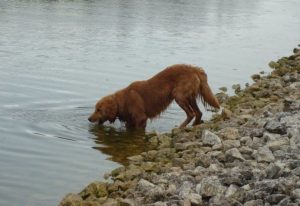The question that a lot of pet owners seem to be having is: just what exactly is Leptospirosis, and is it absolutely necessary to vaccinate my pet against it? Here are some answers.
What Is Lepto?
Leptospirosis is a disease caused by infection with Leptospira bacteria. These bacteria can be found worldwide in soil and water. There are many strains of Leptospira bacteria that can cause disease. Leptospirosis is a zoonotic disease, which means it can be spread from animals to people. Infection in people can cause flu-like symptoms and can cause liver or kidney disease. In the United States, most cases of human leptospirosis result from recreational activities involving water. Infection resulting from contact with an infected pet is much less common, but it is possible.

Risk factors for leptospirosis
Dogs are most commonly affected. Leptospirosis in cats is rare and appears to be mild although very little is known about the disease in this species. Common risk factors for leptospirosis in dogs residing in the United States include exposure to or drinking from rivers, lakes or streams; roaming on rural properties (because of exposure to potentially infected wildlife, farm animals, or water sources); exposure to wild animal or farm animal species, even if in the backyard; and contact with rodents or other dogs.
Signs of leptospirosis
The signs of leptospirosis in dogs vary. Some infected dogs do not show any signs of illness, some have a mild and transient illness and recover spontaneously, while others develop severe illness and death.
Signs of leptospirosis may include fever, shivering, muscle tenderness, reluctance to move, increased thirst, changes in the frequency or amount of urination, dehydration, vomiting, diarrhea, loss of appetite, lethargy, jaundice (yellowing of the skin and mucous membranes), or painful inflammation within the eyes. The disease can cause kidney failure with or without liver failure. Dogs may occasionally develop severe lung disease and have difficulty breathing. Leptospirosis can cause bleeding disorders, which can lead to blood-tinged vomit, urine, stool or saliva; nosebleeds; and pinpoint red spots (which may be visible on the gums and other mucous membranes or on light-colored skin). Affected dogs can also develop swollen legs (from fluid accumulation) or accumulate excess fluid in their chest or abdomen.
Treatment and prevention
Leptospirosis is generally treated with antibiotics and supportive care. When treated early and aggressively, the chances for recovery are good but there is still a risk of permanent residual kidney or liver damage.
Currently available vaccines effectively prevent leptospirosis and protect dogs for at least 12 months. Annual vaccination is recommended for at-risk dogs. Reducing your dog’s exposure to possible sources of the Leptospira bacteria can reduce its chances of infection.
Keep You and Your Family Safe
Although an infected pet dog presents a low risk of infection for you and your family, there is still some risk. If your dog has been diagnosed with leptospirosis, take the following precautions to protect yourself:
-
Administer antibiotics as prescribed by your veterinarian;
-
Avoid contact with your dog’s urine;
-
If your dog urinates in your home, quickly clean the area with a household disinfectant and wear gloves to avoid skin contact with the urine;
-
Encourage your dog to urinate away from standing water or areas where people or other animals will have access;
-
Wash your hands after handling your pet.

